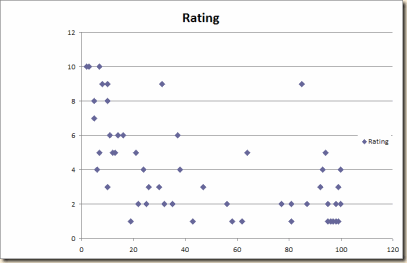A number of writers in the blog ring (specifically Trumwill and Robin, although durned if I can find the links) have discussed human reason and suggested that its evolved purpose is less to find truth than to win arguments. I’ve been working my way through Christopher Lasch’s last book, Revolt of the Elites, and he argues in his chapter “The Lost Art of Argument” that this is less a bug than a feature:
As for the claim that the information revolution would raise the level of public intelligence, it is no secret that the public knows less about public affairs than it used to know. Millions of Americans cannot begin to tell you what is in the Bill of Rights, what Congress does, what the Constitution says about the powers of the presidency, how the party system emerged or how it operates. A sizable majority, according to a recent survey, believe that Israel is an Arab nation. Instead of blaming the schools for this disheartening ignorance of public affairs, as is the custom, we should look elsewhere for a fuller explanation, bearing in mind that people readily acquire such knowledge as they can put to good use. Since the public no longer participates in debates on national issues, it has no reason in inform itself about civic affairs. It is the decay of public debate, not the school system (bad as it is), that makes the public ill informed, notwithstanding the wonders of the age of information. When debate becomes a lost art, information, even though it may be readily available, makes no impression.
What democracy requires is vigorous public debate, not information. Of course, it needs information too, but the kind of information it needs can be generated only by debate. We do not know what we need to know until we ask the right questions, and we can identify the right questions only by subjecting our own ideas about the world to the test of public controversy. Information, usually seen as the precondition of debate, is better understood as its by-product. When we get into arguments that focus and fully engage our attention, we become avid seekers of relevant information. Otherwise we take in information passively – if we take it in at all.
I have written critically of the impulse to approach issues from a partisan position prior to the acquisition of any actual knowledge about the issues themselves. But I am reconsidering whether we can realistically expect otherwise. Using myself as an example, in my youth I became know among my peers as a politics geek because of my relatively high level of knowledge about current world issues, but on reflection I must admit that it was “motivated knowledge” gained specifically to reinforce my own worldview. (If I were fully candid I might admit that this is true even today, though hopefully to a lesser extent.) On the other hand, my knowledge was no less real for having been motivated by the desire to have an informed opinion about something.
Perhaps the trick is not the disinterested pursuit of knowledge, but rather maturing our minds to be open to assimilating contrary facts as well, even to be persuaded by the weight of the evidence. Our capacity for even this may be limited, however, and I can’t say that I know the formula for getting there in any case.








